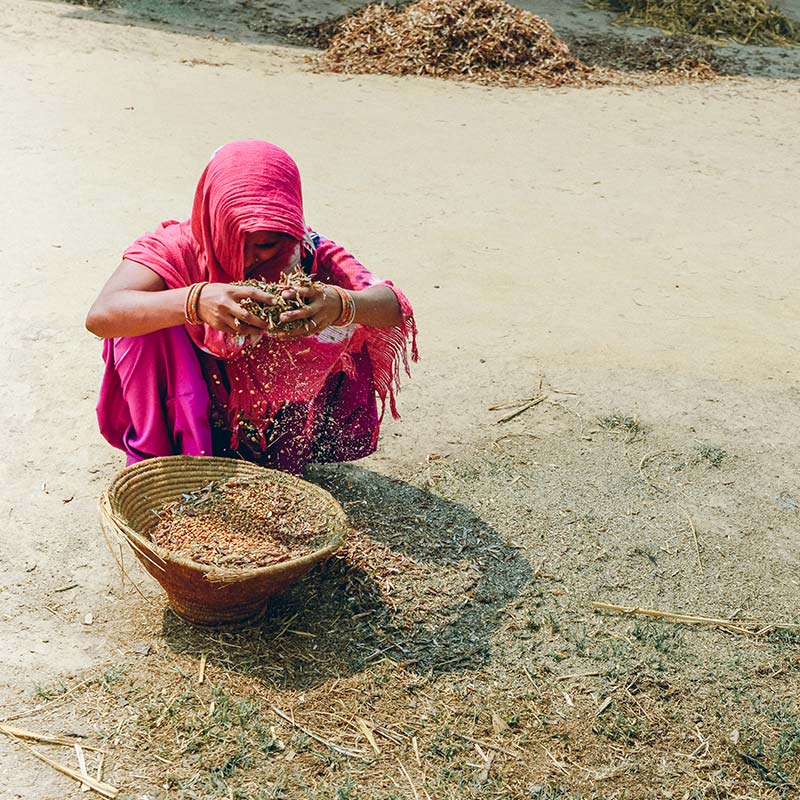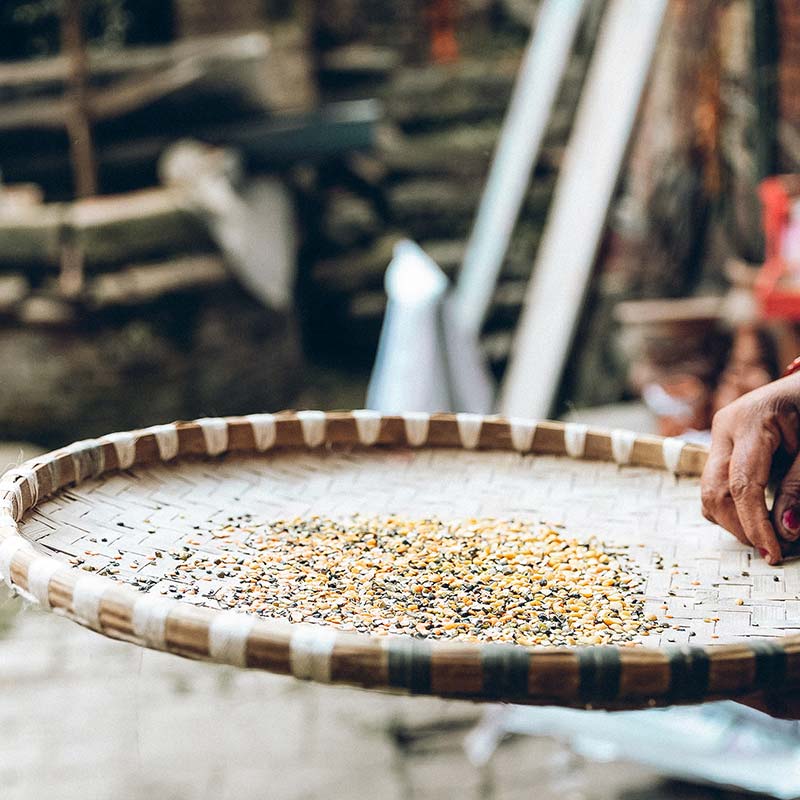Nutrition Issues in Nepal
Malnutrition is a serious problem for children and mothers in Nepal.
Nutrition issues are complex and sadly affect those who
are already vulnerable in society. Nepal is a developing country and the persistence of poverty is a major cause of poor nutrition. Bad diet, limited education, low status of women, inadequate hygiene, lack of food security and poor infant feeding contribute to nutrition issues for women
and children.
Almost 1 in 30 Nepali children die before reaching their first birthday and 1 in 25 do not survive to their fifth birthday[1]

Malnourished women and children
Good nutrition is vital for children to grow strong and healthy. Well-fed kids get sick less often and have energy to learn, play and develop their full potential. Chronic malnutrition causes stunting, an irreversible condition that limits the physical and cognitive growth of children.
- 36% of Nepali children age under five suffer from malnutrition (stunting)
- 27% of children are underweight
- 10% are too thin for their height (wasted)
Women at risk of malnutrition are affected by heavy physical workload, inadequate nutrition knowledge and a lack of extra food intake during pregnancy and lactating.
- Half of all mothers in Nepal have a diet which is inadequate in the variety of foods they eat
- 11% of women age 15–49 are short (less than 145 cm) and 17% are thin (BMI less than 18.5)[2]
Poor breastfeeding practices
The World Health Organisation and UNICEF recommend that infants are breastfed within the first hour of birth and are exclusively breastfed for the first 6 months of life. Breastmilk is the most safe and nutritious food for babies and provides all the nutrients they need to grow strong and healthy.
- Only 66% of Nepali infants under 6 months of age are exclusively breastfed
- Just 55% of newborns are breastfed within one hour of birth
- 14% of babies are being fed an alternative milk by 2–3 months of age


Poor complementary feeding of babies
and toddlers
As a baby grows, frequent breastfeeding needs to be complemented with appropriate amounts of solid food to help the child develop and stay healthy. Nepali babies and toddlers aren’t always getting good complementary food.
- Nepali children lack animal protein foods in their diets — just 13% of children aged 6–23 months were fed an egg the previous day and only 1 in 5 had eaten meat, fish or poultry the day before
- Just one third of children aged 6–23 months were fed a Vitamin A rich fruit or vegetable the day before
- Only 47% of children age 6–23 months receive meals that include the minimum recommended dietary diversity (at least four food groups)
- Only 36% of children aged 6–23 months are fed a minimally acceptable diet
- 71% of children age 6–23 months are fed meals at the minimum frequency
Anaemia (iron deficiency)
Anaemia (iron deficiency) particularly affects Nepali women and children and increases the risk of complications both during and after childbirth. Adolescents and the elderly are also vulnerable.
- 53% of Nepali children aged 6 – 59 months have suffered from anaemia
- 41% of women aged 15–49 have suffered from anaemia
- Only 35% of children consume food rich in iron
Vitamin A Deficiency
A deficiency in Vitamin A can cause night blindness, eye damage and permanent blindness. Pregnant women, breastfeeding mothers and children are most at risk of developing this deficiency.
- Only 63% of Nepali children aged 6–23 months consume food rich in Vitamin A
Iodine Deficiency Disorders
Iodine deficiency causes goiter, cretinism, and growth problems in children. This deficiency also hinders brain development.
- On average, 95% of households use iodized salt for cooking but Province 6 has the lowest proportion with only 82% of households using iodized salt
References
[1] Children, Food and Nutrition: State of the World’s Children 2019 report, UNICEF, Full report
[2] All other data on this page is from the National Demographic and Health Survey 2016 NDHS 2016, USAID, New Era, GoN Ministry of Health and Population. Key Findings, Full Report
